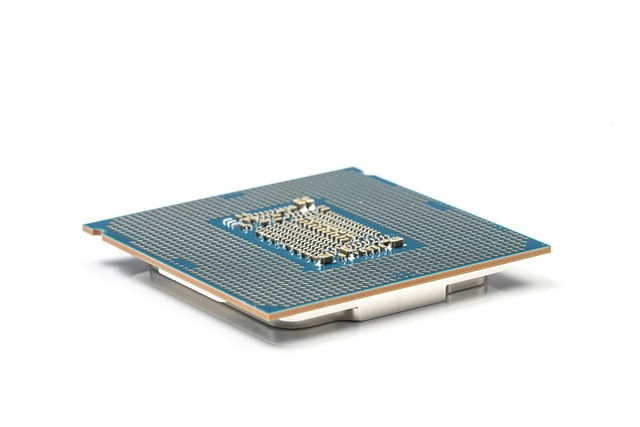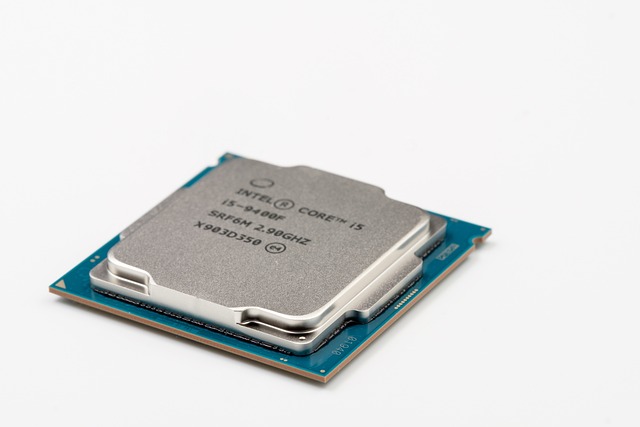Time: 2023-12-29 15:00:29View:
Surface mount technology (SMT) is a method for producing electronic circuits in which the components are mounted or placed directly onto the surface of printed circuit boards (PCBs). This is in contrast to through-hole technology, where the leads of components are inserted into holes drilled in the PCB and then soldered to pads on the opposite side of the board. SMT components are much smaller than their through-hole counterparts, allowing for much higher component density on the PCB. This results in smaller and lighter electronic devices, as well as improved electrical performance due to shorter interconnection paths.
SMT components are typically mounted onto the PCB using pick-and-place machines, which can rapidly and accurately position the components onto the board. Once the components are in place, the PCB is passed through a reflow soldering process, where the solder paste that has been previously applied to the board is melted, forming the electrical connections between the components and the board. This process is highly automated and allows for the rapid and cost-effective assembly of electronic circuits.
The widespread adoption of SMT has revolutionized the electronics industry, enabling the production of smaller, more powerful, and more reliable electronic devices. SMT components come in a variety of packages, including resistors, capacitors, integrated circuits, and many others. The miniaturization of components made possible by SMT has been a driving force behind the development of portable electronics, such as smartphones, tablets, and wearable devices. Additionally, SMT has facilitated advancements in areas such as automotive electronics, medical devices, and industrial equipment, where compact and high-performance electronic systems are essential.
In conclusion, surface mount technology has had a profound impact on the electronics industry, enabling the production of smaller, lighter, and more powerful electronic devices. Its high level of automation and cost-effectiveness have made it the dominant method for assembling electronic circuits, and its continued development is likely to drive further innovation in electronic design and manufacturing.

Surface mount technology (SMT) and surface mount device (SMD) are closely related terms in the field of electronics, but they refer to different aspects of electronic componentry. SMT is a method of manufacturing electronic circuits in which the components are mounted directly onto the surface of printed circuit boards (PCBs), while SMD refers to the actual components themselves that are designed to be mounted onto the surface of PCBs.
SMD components are specifically designed for surface mounting. They come in a variety of packages, such as resistors, capacitors, diodes, integrated circuits, and more. These components are typically smaller and lighter than their through-hole counterparts, allowing for higher component density on the PCB and contributing to the miniaturization of electronic devices. SMD components are designed to be mounted using automated pick-and-place machines and then soldered onto the PCB using reflow soldering techniques.
On the other hand, SMT encompasses the entire process of manufacturing electronic circuits using surface-mounted components. This includes not only the SMD components themselves, but also the machinery and techniques used to place and solder these components onto the PCB. SMT involves the use of pick-and-place machines to accurately position the components onto the board, as well as reflow soldering to create the electrical connections between the components and the PCB.
In summary, SMD refers to the individual components that are designed for surface mounting onto PCBs, while SMT encompasses the entire process of manufacturing electronic circuits using these surface-mounted components. Both SMD and SMT have revolutionized the electronics industry, enabling the production of smaller, lighter, and more powerful electronic devices. Their widespread adoption has driven innovation in electronic design and manufacturing, leading to the development of a wide range of advanced consumer, industrial, and medical electronic products.
Surface mount technology (SMT) offers several significant advantages over traditional through-hole technology, making it the dominant method for assembling electronic circuits. One of the primary advantages of SMT is its ability to accommodate smaller and lighter components. SMT components are typically much smaller than their through-hole counterparts, allowing for higher component density on printed circuit boards (PCBs). This miniaturization has been a driving force behind the development of smaller and more portable electronic devices, such as smartphones, tablets, and wearable technology.
Another key advantage of SMT is its improved electrical performance. The smaller size of SMT components results in shorter interconnection paths on the PCB, reducing parasitic capacitance and inductance and improving high-frequency performance. Additionally, the smaller size and closer proximity of components in SMT assemblies can lead to reduced electromagnetic interference and improved signal integrity, making SMT ideal for high-speed and high-frequency applications.
SMT also offers cost and time savings in the manufacturing process. The use of automated pick-and-place machines to accurately position components onto the PCB, as well as the reflow soldering process, allows for rapid and cost-effective assembly of electronic circuits. SMT assembly is highly automated, reducing the need for manual labor and increasing production throughput. Additionally, the smaller size and weight of SMT components can lead to reduced material costs and shipping expenses.
Furthermore, SMT enables the use of double-sided and multilayer PCBs, as components can be mounted on both sides of the board, allowing for even higher component density and more complex circuit designs. This flexibility in PCB design has expanded the possibilities for electronic product development and has contributed to the miniaturization and increased functionality of electronic devices.
In conclusion, the advantages of SMT, including smaller and lighter components, improved electrical performance, cost and time savings in manufacturing, and increased design flexibility, have made it the preferred method for assembling electronic circuits. Its widespread adoption has driven innovation in electronic design and manufacturing, leading to the development of a wide range of advanced consumer, industrial, and medical electronic products.
While surface mount technology (SMT) offers numerous advantages, it also comes with its own set of disadvantages. One of the primary challenges of SMT is related to the handling and assembly of the smaller components. The tiny size of SMT components can make them more difficult to handle and place accurately on the printed circuit board (PCB). This can lead to challenges in manufacturing, as the components may be more susceptible to damage during handling, and the precision required for their placement demands advanced machinery and skilled operators.
Another disadvantage of SMT is the potential for thermal issues during the soldering process. The high temperatures used in the reflow soldering process can pose challenges for sensitive components, such as those with temperature-sensitive coatings or those that are susceptible to thermal stress. Additionally, the small size of SMT components can make them more prone to overheating during soldering, potentially leading to defects such as tombstoning or solder bridging.
Furthermore, SMT components may be more susceptible to damage from mechanical stress and environmental factors due to their smaller size and lighter weight. This can be a concern in applications where the electronic devices are subject to vibration, shock, or extreme temperatures. Additionally, the smaller size of SMT components can make them more challenging to inspect for defects, potentially leading to issues with quality control and reliability.
In addition, the design and assembly of SMT components can be more complex than through-hole components, especially for prototypes or small-scale production runs. This complexity can lead to higher initial setup costs and longer development times, particularly for designs that require specialized SMT components or custom PCB layouts.
In conclusion, while SMT offers numerous advantages, including smaller size, improved electrical performance, and cost savings, it also presents challenges related to component handling, thermal issues during soldering, susceptibility to damage, and increased complexity in design and assembly. These disadvantages highlight the importance of careful consideration and expertise in the design and manufacturing processes when utilizing SMT for electronic assemblies.

Surface mount technology (SMT) has found widespread applications across various industries due to its numerous advantages, making it the preferred method for assembling electronic circuits. One of the most prominent applications of SMT is in consumer electronics. SMT has enabled the miniaturization of electronic devices such as smartphones, tablets, laptops, and wearable technology, allowing for smaller, lighter, and more portable products with increased functionality. The compact nature of SMT components has been instrumental in the development of sleek and powerful consumer electronics that have become ubiquitous in modern society.
In the automotive industry, SMT plays a crucial role in the manufacturing of advanced electronic systems for vehicles. SMT components are used in automotive control units, infotainment systems, safety features, and various sensors. The smaller size and improved electrical performance of SMT components have contributed to the development of more sophisticated and compact automotive electronics, enhancing vehicle performance, safety, and comfort.
Moreover, SMT has significant applications in the medical device industry. The miniaturization and high component density made possible by SMT have facilitated the development of smaller and more advanced medical devices, including diagnostic equipment, monitoring devices, implantable electronics, and wearable medical technology. These advancements have led to improved patient care, enhanced portability, and increased accessibility to medical technology.
SMT is also widely used in telecommunications equipment, including networking devices, routers, switches, and wireless communication systems. The compact and high-performance nature of SMT components has been instrumental in the development of powerful and efficient telecommunications infrastructure, enabling high-speed data transmission, improved connectivity, and the expansion of global communication networks.
Furthermore, SMT has applications in industrial electronics, including control systems, automation equipment, robotics, and power electronics. The smaller size and improved electrical performance of SMT components have contributed to the development of more compact and efficient industrial electronics, leading to increased productivity, energy efficiency, and automation in various industrial sectors.
In conclusion, the applications of SMT span across a wide range of industries, including consumer electronics, automotive, medical devices, telecommunications, and industrial electronics. The miniaturization, improved electrical performance, and cost-effectiveness of SMT components have driven innovation and advancements in electronic design and manufacturing, leading to the development of smaller, more powerful, and more reliable electronic products across various sectors.